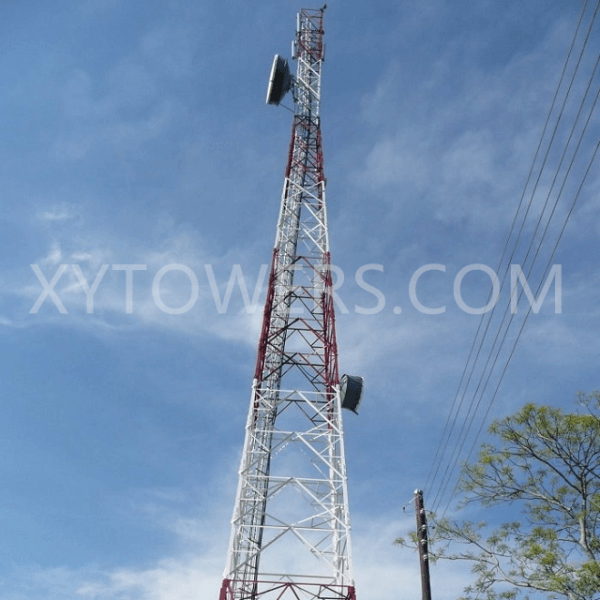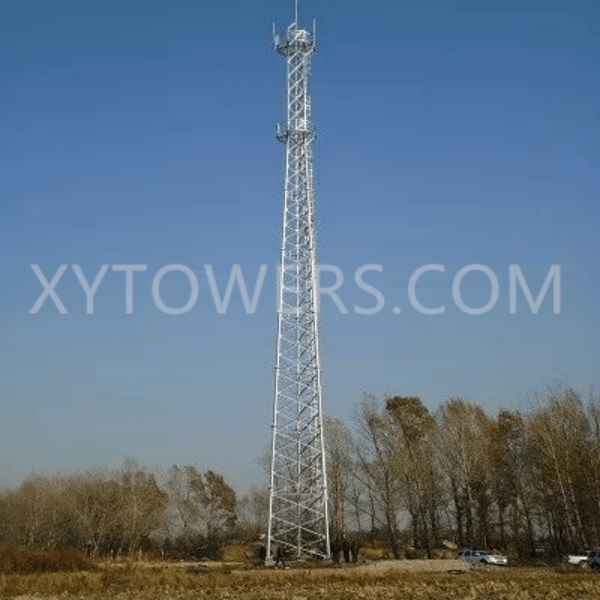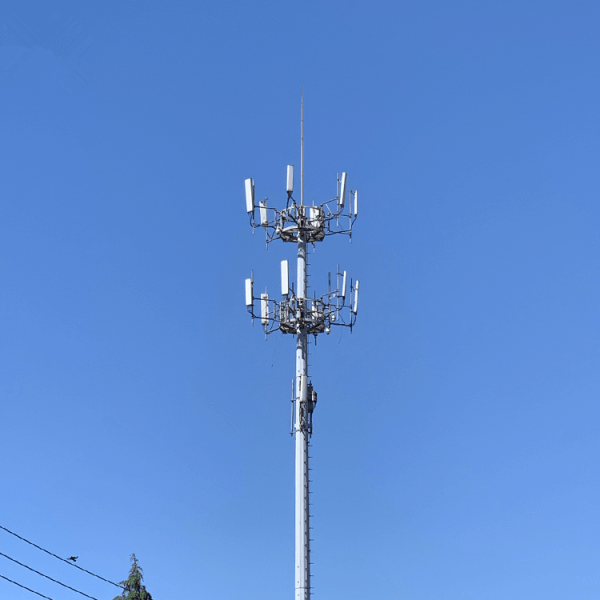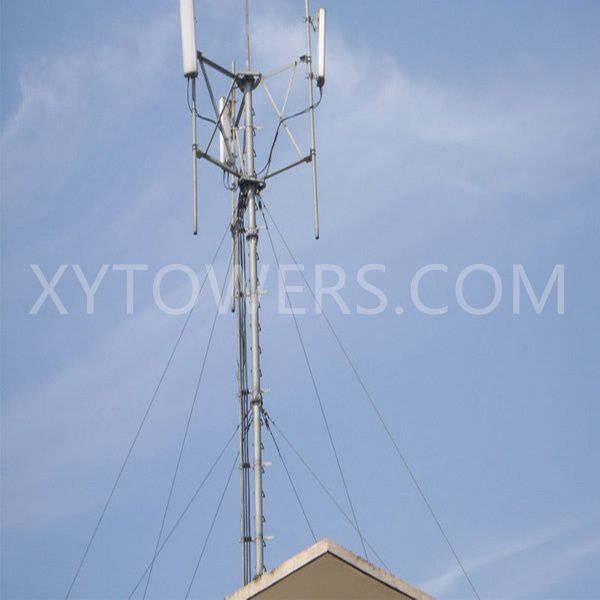The structure used to mount communication antennas is generally referred to as a “communication tower mast,” and “iron tower” is just a subclass of “communication tower mast.” In addition to “iron tower,” “communication tower mast” also includes “mast” and “landscape tower.” Iron towers are divided into angle steel towers, three-tube towers, single-tube towers, and guyed towers. Except for guyed towers, the rest of the types can maintain an upright posture on their own. Generally, self-supporting towers are assembled from steel pipes or angle steel, with heights ranging from over 20 meters to over 100 meters.
Angle steel towers are assembled from angle steel materials, using bolt connections, and are convenient for processing, transportation, and installation. They have high overall rigidity, strong load-bearing capacity, and mature technical applications. Although angle steel towers have many advantages, their disadvantages are also obvious: they occupy a large area! The huge steel frame standing there exerts pressure on everyone passing by. For people living nearby, they may complain due to concerns about harmful radiation. Therefore, angle steel towers are mainly used in suburban, county, township, and rural areas with no aesthetic requirements and low land value. These areas often have fewer users and are suitable for extensive coverage using high towers.
The tower body of a three-tube tower is made of steel pipes, with three main steel pipes planted in the ground as the framework, supplemented by some horizontal and diagonal steel materials for fixation. Compared with traditional angle steel towers, the cross-section of the three-tube tower is triangular, and the body is slimmer. Therefore, it has a simple structure, fewer components, convenient construction, and a smaller footprint, making it more cost-effective. However, it has its drawbacks: lower strength and unattractive appearance. Therefore, three-tube towers are also suitable for areas with no aesthetic requirements, such as suburban, county, township, and rural areas, with tower heights lower than angle steel towers.
A telecom monopole tower simply involves planting a thick steel pipe vertically, making it simple and aesthetically pleasing, occupying a small footprint, and being quick to construct. However, it has its drawbacks: high cost, high installation requirements, difficult transportation due to larger components, and challenging quality control due to numerous welds. Despite these drawbacks, single-tube towers have a wide range of applications, suitable for urban areas, residential communities, universities, commercial areas, scenic spots, industrial parks, and railway lines.
A guyed tower is a very fragile tower that cannot stand independently and requires several guy wires to be fixed to the ground. It has the advantage of being cheap, lightweight, and easy to install. However, its disadvantages include occupying a large area, poor reliability, weak load-bearing capacity, and difficulty in installation and maintenance of guy wires. Therefore, guyed towers are more commonly used in open mountainous areas and rural areas.
Compared to the above types of towers, guyed towers cannot stand independently and require guy wires for support, so they are called “non-self-supporting towers,” while angle steel towers, three-tube towers, and single-tube towers are all “self-supporting towers.”
Post time: Aug-07-2024









